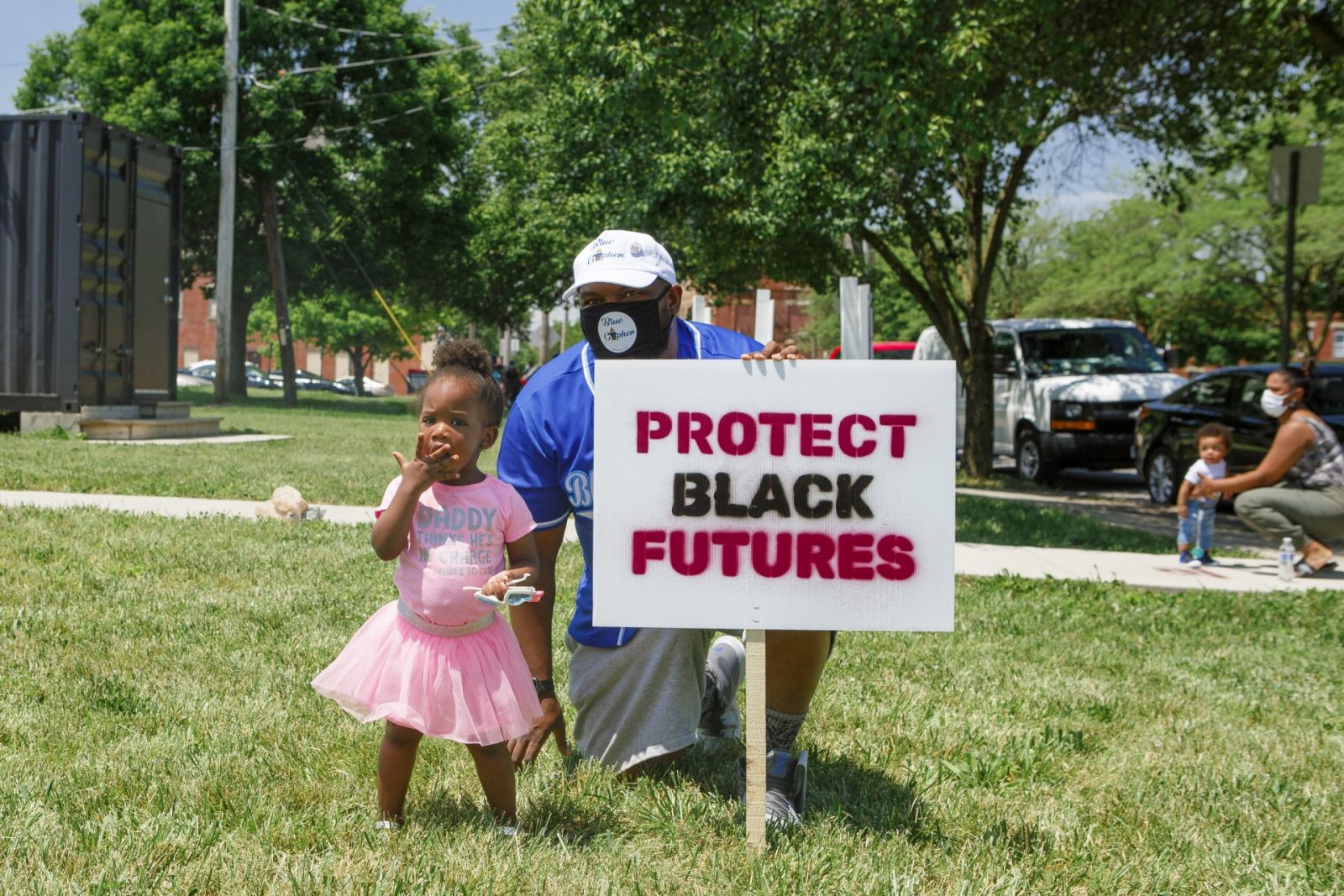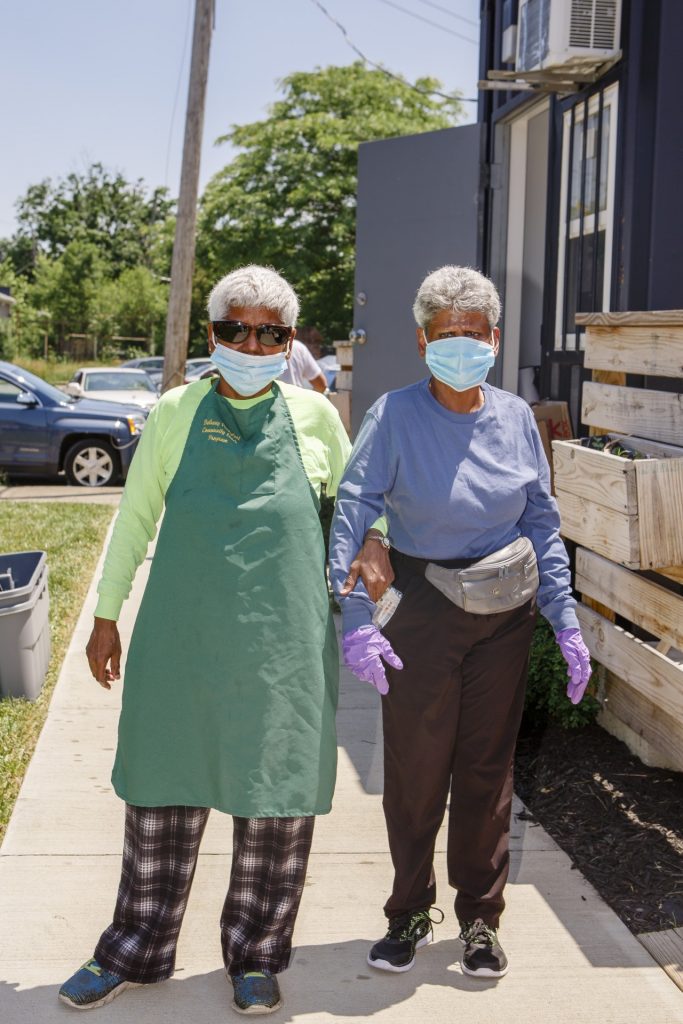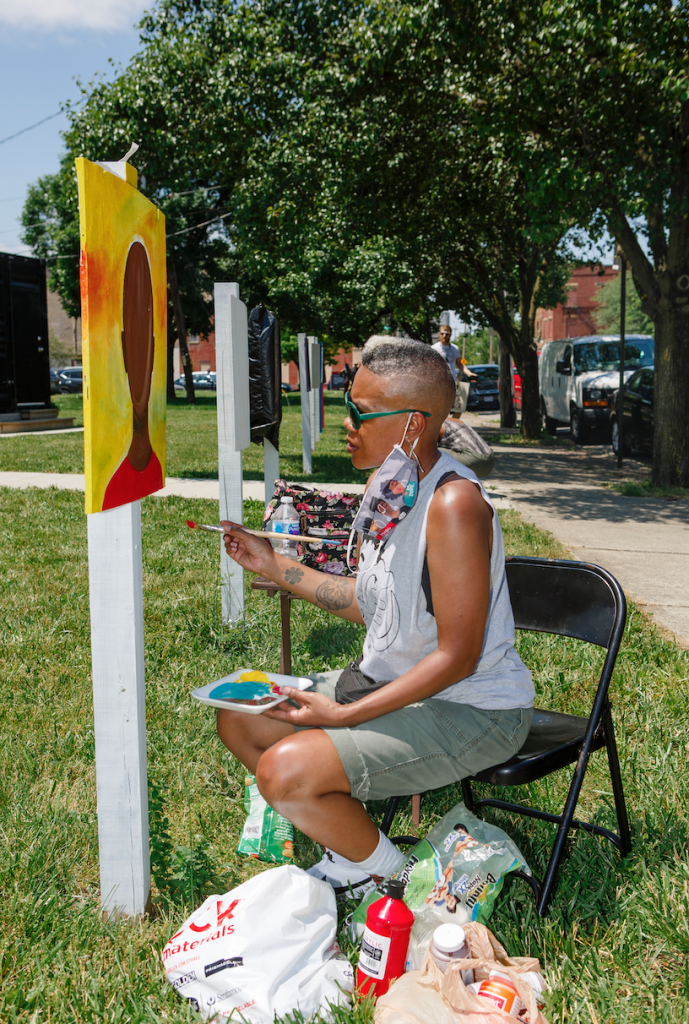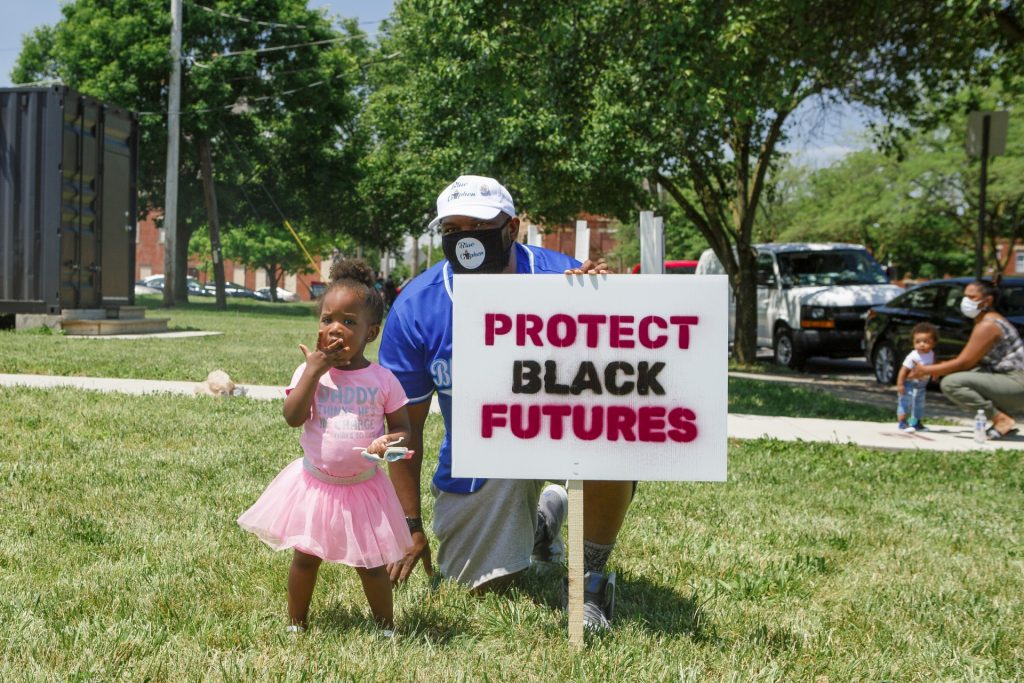Maroon Arts Group born from Black artists seeking a voice

Today it thrives as one of the most active, Black artist spaces in Columbus
From its inception, the Maroon Arts Group’s (MAG) mission has been to provide a platform for Black artists and voices that may not easily find a welcoming space in other venues.
Sheri Neale, a Baltimore transplant, formed MAG when she was seeking backing for a performance art piece directed by Troy Burton titled “A Real Nigga Show”—a pastiche of poetry, dance, and music, that takes a hard look at the stereotypes surrounding the N-word. She had first seen the production in college and was moved by “the truths it touched on from both a mental health and an artistic perspective.” She felt called to bring the production to Columbus after the deaths of Black men Eric Garner and Michael Brown at the hands of police—in New York and Missouri, respectively.

“I couldn’t rest in my body about Eric and Michael,” Neale said of the deaths and, since then, “I’ve been doing the work through art.”
When she attempted to find a platform for the provocative piece, nary a corporate backer was in sight.
So, Neale took matters into her own hands. She called on local artists and creatives to join efforts to bring the production to life in Columbus. From that tour de force, MAG was founded in 2015. Shortly after, the production
was performed at Columbus Performance Arts Center’s Shedd Theatre to a sold-out audience.
Although reluctant to take credit, she does own that she has the gift to motivate others into action.
“I recognize that gift, I honor that gift, and I’m just happy that it serves others through art,” Neale said.
This service to others, using art as a medium to affect positive change in her neighborhood, is what inspired Neale to create a physical space for MAG. In 2016, the organization was awarded a grant from the City of Columbus called Community Impact which offered them an abandoned lot on the corner of Mt. Vernon and 17th Street. Once they had the land, the question became how to create a space that was affordable and accessible to the neighborhood.
“We were trying to figure out what we could take on that wouldn’t represent like an office space,” said Neale. “It was Marshall Shorts (the vice-chair of MAG) who introduced the idea of shipping containers and I was like… keep talking.”
And so the boxpark known as MPACC (Movement Pursuing Arts, Commerce & Community) was born. MPACC is a community art space comprising two shipping containers—one housing a performance space with a stage and the second holding an art gallery. A third container onsite is owned and operated by Willowbeez SoulVeg.

The boxpark is situated just down the street from the King Arts complex and around the corner from Lincoln Theatre, creating an art walk of sorts from one destination to the next.
“I don’t know if it’s a triangular art hub, but it’s a nice end cap to the area,” said Neale. What makes MACC so unique is that it sits at the heart of a community whose residents do not always have access to those larger art venues. It’s park-like structure and lack of entrance fee mean that people can feel free to come and go, experiencing events at the space in whatever way works for them.
“We want folks to know they can come over whenever something’s going on here,” she said.“This is for them. Everyone’s invited, but this is really providing something for this neighborhood.”
During recent protests for racial equality, MPACC has been a consistent rallying spot and a safe space for community members to be engaged in a movement for change in a family-friendly environment. At a recent event hosted by MAG, the public was invited to come and create yard signs for protest. Families gathered
and let their kids enthusiastically spray paint signs in black and of course, maroon, with rallying slogans such as “Rise, Create, Resist” and “Protect Black Futures.” While there, they were encouraged to engage with artists who were painting a series of boards that had been staked around the perimeter of the park for a project titled “Nothing to Fear.”

On display were portraits of faces of Black boys and men. The project is spearheaded by Francesca Miller, a local artist and recent graduate of OSU who majored in art education. Miller conceived the project as her own form of social protest through art.
“I wanted people to see each individual face as the beautiful, dignified humans they are,” she said. Upon reading on social media that Miller was looking for a space to house her idea, Neale contacted her and offered up MPACC.
Most of the boards are painted by artists who reached out to Miller when they heard about the project. One young man who lives across the street, wanted a board of his own. He approached Miller to find out what the project was about and how he could get involved.

“He was so excited and couldn’t stop smiling and I was like….OK, go ahead,” said Miller, who was initially uncertain whether he had the artistic experience to match the other contributions, but couldn’t resist his enthusiasm. As Miller tells it, he began to draw a self-portrait on the board with a pencil but quickly became overwhelmed and admitted to her that he was good at drawing, but not that skilled at painting. When she relayed the story to contributing artist Richard Duarte Brown, he asked Miller for a photo of the young man and offered to finish the painting.
“When we use art to beautify a space, it impacts people on a deep level.”
The next day the teen returned, Miller said, and was struck. She said he told her, “Oh man, that looks just like me!” she laughed as she relayed the story. He told her that “All day people came up to me and said, ‘Hey, I think your face is on one of those boards over there!’”
When MAG isn’t directly holding an event, the space is open to community members to use. Over the last month, there has been a constant flow of performances by poets, musicians, artists, and activists. On any given night one could tune in to live streams of the performances and seek solace listening to young writers weave their frustration into spoken word as silver-haired singers belt out, “A Change is Gonna Come” and other Civil Rights era songs.
BROUGHT TO YOU BY
Neale says that the space is for the community and this is how it manifests—voices ringing out to bring comfort and guidance, paintings around its borders reminding neighbors of their beauty.
As Miller so aptly put it, “When we use art to beautify a space, it impacts people on a deep level. The programs that they have [at MPACC], engaging people with the music and arts, is really uplifting.”
This sentiment was echoed by board member Ekundayo Igeleke who told Orie Givens of Spectrum News television last week, “As long as oppression exists, we’ll be out there fighting against it, but also, experiencing joy.”
MPAAC is a place for the community, for education, gathering, and celebration, a space to hold grief and rage. Most importantly it is a space to hold hope and the possibility that through art, transformation can be achieved. And like the young man who came back to find his portrait on the wall, MAG is a place for the Black community to find their faces on the wall and know they are counted too.
BROUGHT TO YOU BY



